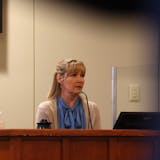A small electric-vehicle company backed by UPS wants to replace the assembly lines automakers have used for more than a century with something radically different — small factories employing a few hundred workers.
The company, Arrival, is creating highly automated "microfactories" where its delivery vans and buses will be assembled by multi-tasking robots, breaking from the approach pioneered by Henry Ford and used by most of the world's automakers.
The plants would produce tens of thousands of vehicles a year. That's far fewer than traditional auto plants, which require 2,000 or more workers and typically produce hundreds of thousands of vehicles a year.
The advantage, according to Arrival, is that its microfactories will cost about $50 million rather than the $1 billion or more required to build a traditional factory.
The company, which is based in London and is setting up factories in England and the United States, said this method should yield vans that cost a lot less than other electric models and even today's standard, diesel-powered vehicles.
"The assembly-line approach is very capital-intensive, and you have to get to very high production levels to make any margin," said Avinash Rugoobur, Arrival's president and a former General Motors executive. "The microfactory allows us to build vehicles profitably at really any volume."
The company hopes its electric vehicles will disrupt the normally sleepy market for delivery vans. Such vehicles are well-suited to electrification because they travel a set number of miles a day and can be charged overnight.
Arrival has already won over UPS, which has about a 4% stake in the company and plans to buy 10,000 Arrival vans over the next several years.



